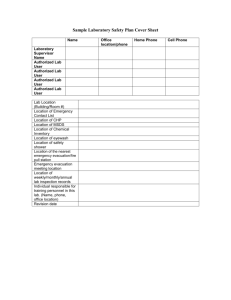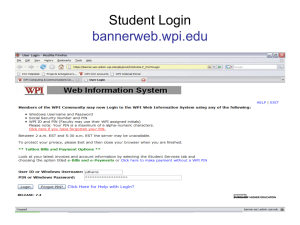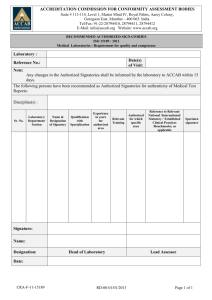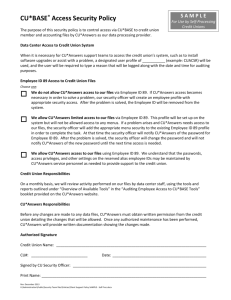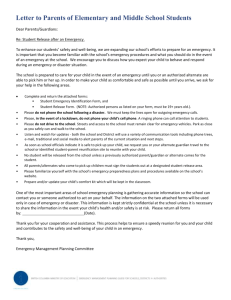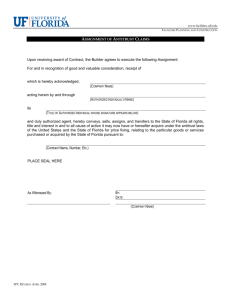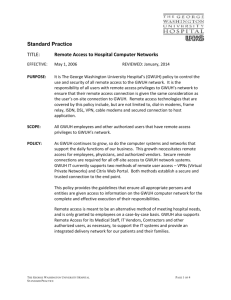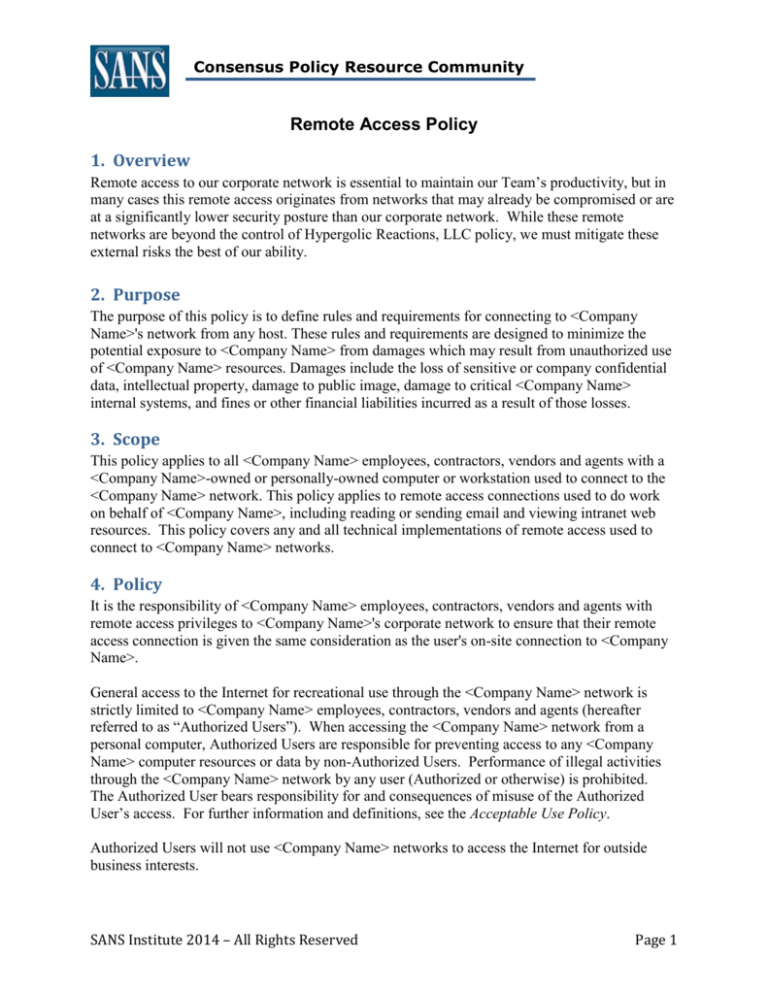
Consensus Policy Resource Community
Remote Access Policy
1. Overview
Remote access to our corporate network is essential to maintain our Team’s productivity, but in
many cases this remote access originates from networks that may already be compromised or are
at a significantly lower security posture than our corporate network. While these remote
networks are beyond the control of Hypergolic Reactions, LLC policy, we must mitigate these
external risks the best of our ability.
2. Purpose
The purpose of this policy is to define rules and requirements for connecting to <Company
Name>'s network from any host. These rules and requirements are designed to minimize the
potential exposure to <Company Name> from damages which may result from unauthorized use
of <Company Name> resources. Damages include the loss of sensitive or company confidential
data, intellectual property, damage to public image, damage to critical <Company Name>
internal systems, and fines or other financial liabilities incurred as a result of those losses.
3. Scope
This policy applies to all <Company Name> employees, contractors, vendors and agents with a
<Company Name>-owned or personally-owned computer or workstation used to connect to the
<Company Name> network. This policy applies to remote access connections used to do work
on behalf of <Company Name>, including reading or sending email and viewing intranet web
resources. This policy covers any and all technical implementations of remote access used to
connect to <Company Name> networks.
4. Policy
It is the responsibility of <Company Name> employees, contractors, vendors and agents with
remote access privileges to <Company Name>'s corporate network to ensure that their remote
access connection is given the same consideration as the user's on-site connection to <Company
Name>.
General access to the Internet for recreational use through the <Company Name> network is
strictly limited to <Company Name> employees, contractors, vendors and agents (hereafter
referred to as “Authorized Users”). When accessing the <Company Name> network from a
personal computer, Authorized Users are responsible for preventing access to any <Company
Name> computer resources or data by non-Authorized Users. Performance of illegal activities
through the <Company Name> network by any user (Authorized or otherwise) is prohibited.
The Authorized User bears responsibility for and consequences of misuse of the Authorized
User’s access. For further information and definitions, see the Acceptable Use Policy.
Authorized Users will not use <Company Name> networks to access the Internet for outside
business interests.
SANS Institute 2014 – All Rights Reserved
Page 1
Consensus Policy Resource Community
For additional information regarding <Company Name>'s remote access connection options,
including how to obtain a remote access login, free anti-virus software, troubleshooting, etc., go
to the Remote Access Services website (company url).
4.1 Requirements
4.1.1 Secure remote access must be strictly controlled with encryption (i.e., Virtual Private
Networks (VPNs)) and strong pass-phrases. For further information see the Acceptable
Encryption Policy and the Password Policy.
4.1.2 Authorized Users shall protect their login and password, even from family members.
4.1.3 While using a <Company Name>-owned computer to remotely connect to <Company
Name>'s corporate network, Authorized Users shall ensure the remote host is not
connected to any other network at the same time, with the exception of personal networks
that are under their complete control or under the complete control of an Authorized User
or Third Party.
4.1.4 Use of external resources to conduct <Company Name> business must be approved in
advance by InfoSec and the appropriate business unit manager.
4.1.5 All hosts that are connected to <Company Name> internal networks via remote access
technologies must use the most up-to-date anti-virus software (place url to corporate
software site here), this includes personal computers. Third party connections must
comply with requirements as stated in the Third Party Agreement.
4.1.6 Personal equipment used to connect to <Company Name>'s networks must meet the
requirements of <Company Name>-owned equipment for remote access as stated in the
Hardware and Software Configuration Standards for Remote Access to <Company
Name> Networks.
5. Policy Compliance
5.1 Compliance Measurement
The Infosec Team will verify compliance to this policy through various methods, including but
not limited to, periodic walk-thrus, video monitoring, business tool reports, internal and external
audits, and inspection, and will provide feedback to the policy owner and appropriate business
unit manager.
5.2 Exceptions
Any exception to the policy must be approved by Remote Access Services and the Infosec Team
in advance.
5.3 Non-Compliance
An employee found to have violated this policy may be subject to disciplinary action, up to and
including termination of employment.
SANS Institute 2014 – All Rights Reserved
Page 2
Consensus Policy Resource Community
6 Related Standards, Policies and Processes
Please review the following policies for details of protecting information when accessing the
corporate network via remote access methods, and acceptable use of <Company Name>’s
network:
Acceptable Encryption Policy
Acceptable Use Policy
Password Policy
Third Party Agreement
Hardware and Software Configuration Standards for Remote Access to <Company
Name> Networks
7 Revision History
Date of Change
Responsible
Summary of Change
June 2014
SANS Policy Team
April 2015
Christopher Jarko
Updated and converted to new format.
Added an Overview; created a group term for
company employees, contractors, etc. (“Authorized
Users”); strengthened the policy by explicitly
limiting use of company resources to Authorized
Users only; combined Requirements when possible,
or eliminated Requirements better suited for a
Standard (and added a reference to that Standard);
consolidated list of related references to end of
Policy.
SANS Institute 2014 – All Rights Reserved
Page 3

